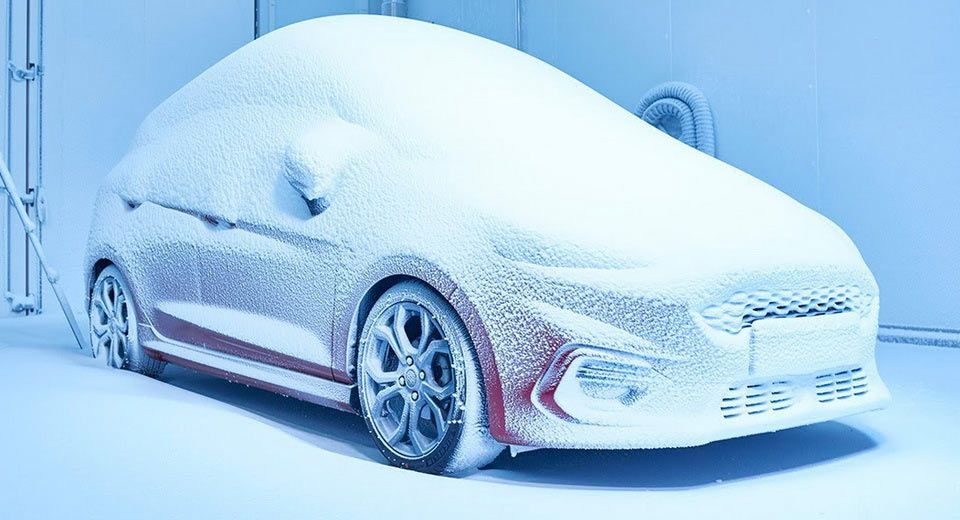At Ford’s new state of the art Environmental Test Center in Cologne, Germany, engineers can test upcoming models in some of the world’s most demanding weather conditions, whenever they want.
For example, they can simulate altitudes higher than the tallest Alpine peak (Mont Blanc), go from the desert heat of the Sahara to the arctic freeze of Siberia, or the take a stroll through the humid forests of Costa Rica, all in an area the size of a football pitch.
For humidity, Ford vehicles undergo testing in both cold and hot conditions, where the test center’s wind tunnels can take humidity from 10% up to 95%. Engineers will even make it rain heavily in order to see how quickly the windows fog up.
When it comes to extreme heat, the test center can raise the stakes all the way to 55 degrees Celsius (151 Fahrenheit), just 1.7 degrees shy of the highest-ever air temperature recorded. This is done with the help of 28 spotlights with 4,000 watt bulbs.
The exact opposite of this test occurs when Ford engineers take vehicles from 100 meters (328 ft) below sea level all the way up to 5,200 meters (17,000), generating wind speeds of up to 120 km/h (75 mph). Temperature is then dropped to – 40 Celsius, which is the average winter temperature in eastern Siberia.
These conditions are perfect for testing the heating systems, windscreen defrosting or the air intake systems.



